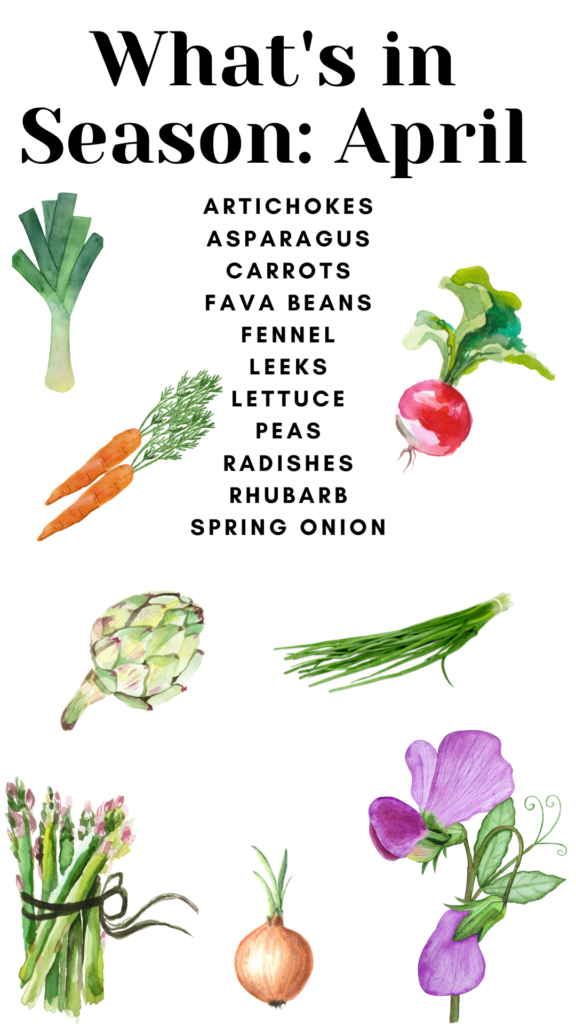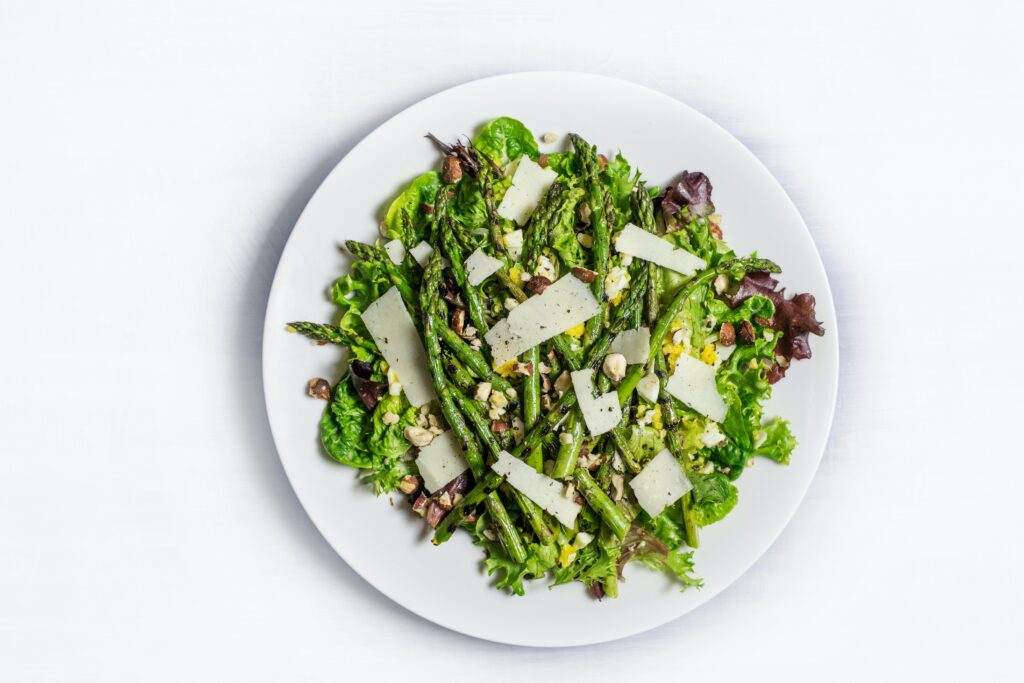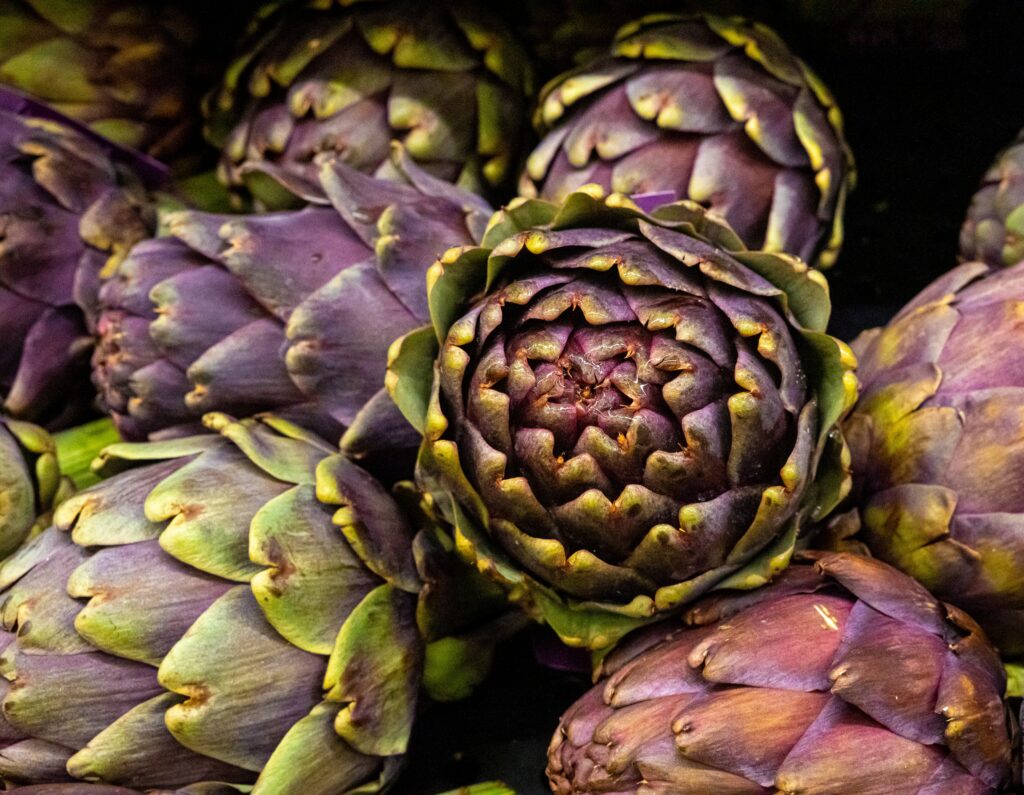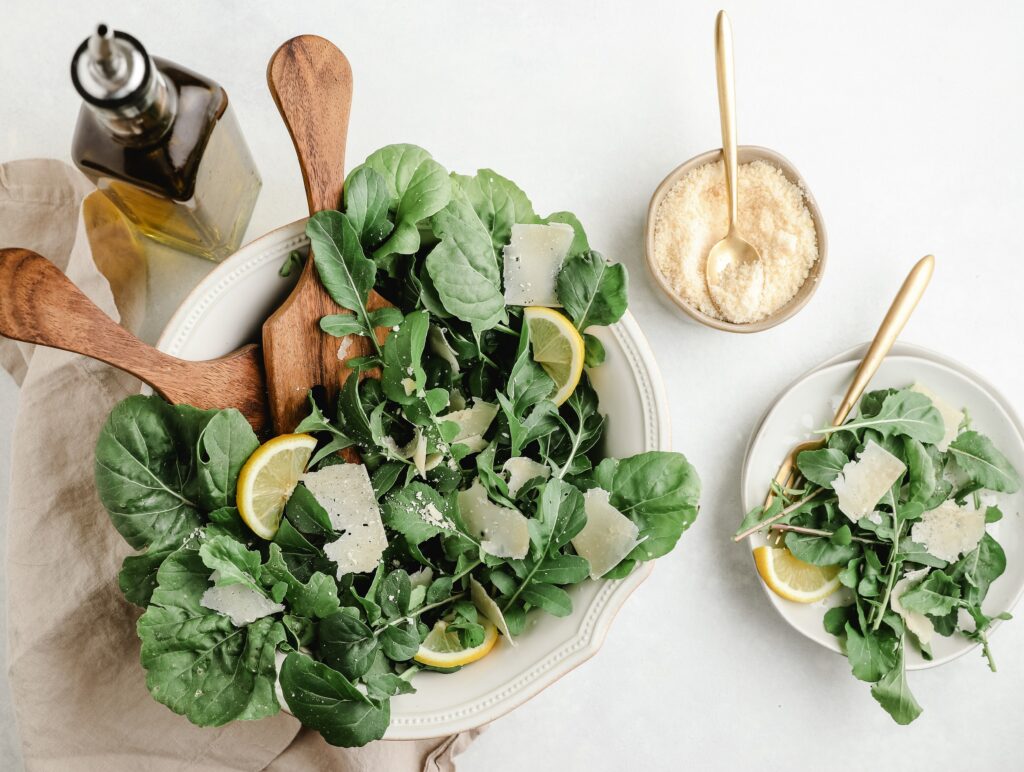Spring, we made it. Rivers are thawing, daffodils are blooming, and our grassy front yard is turning green. Here in the Rocky Mountains, spring is unparalleled. Like other temperate climates, we welcome it with open arms. With sunnier days and warmer temps on the horizon, our local park beckons. It’s full of color and vitality, a celebration of nature’s unfolding. And so, it’s time to transition into spring eating. As new fruits and veggies fill the produce aisle, we can take advantage of diversifying our plates and supporting local farmers. Today, we’re diving into produce in season—April version. Consider this your April produce guide: a cheat sheet for what’s in season this month.

WHAT IS AYURVEDA?
Before you begin your spring grocery list, let’s talk about Ayurveda. Ayurveda is a natural system of medicine. It’s derived from the Sanskrit words ayur (life) and veda (science or knowledge). Thus, Ayurveda translates to knowledge of life. To this day, Ayurvedic medicine is widely used for its focus on whole-body healing. According to Ayurveda, an imbalanced dosha leads to poor health and disease. Therefore, opting for food, exercise, and lifestyle habits based on your dosha is believed to promote optimal health and balance.
HOW TO EAT with the seasons, ACCORDING TO AYURVEDA
Ayurveda encourages local, seasonal eating—acquiring and consuming foods that are picked or harvested during a particular time of year. From an evolutionary standpoint, this was the way our ancestors ate. Since then, accessibility has come a long way. We’re blessed to have access to a variety of fruits, vegetables, and herbs, year-round. It allows us to eat diversely and healthfully (despite the change in seasons). That said, it’s beneficial to eat seasonally and locally—for your health, your community’s economy, and the planet at large.

Ayurvedic spring diet
Spring is the kapha time of year. The earth and water elements are taking over (otherwise known as mud season). As temperatures shift, you might notice similar shifts in your body. For example, a craving for lighter meals, rather than the dense soups, stews, and casseroles that nourish us in the fall and winter. Now’s the time to replace heavy, oily, sour, and sweet foods with foods that are pungent, bitter, astringent, dry, and light. Start with foraging at local farmers markets or joining a Community Supported Agriculture (CSA) farm. At the grocery store, look for what’s in season. Currently, that includes artichokes, asparagus, fava beans, radishes, rhubarb, and more!
eating lighter IN THE SPRING
With seasonal eating in mind, get creative in the kitchen! First and foremost, go heavy with herbs. Dill, cilantro, and chives are wonderful additions to salads, marinades, dips, sauces, and entrees. They’re packed with flavor and antioxidants. Secondly, add tang and freshness with lemon zest (orange and lime zest are fantastic, too). When choosing grains, opt for lighter grains, like millet, quinoa, and basmati rice. This is also an ideal time to try new greens. After all, your plate is a mirror to spring’s bright green landscape. Last but not least, roast your spring veggies—even radishes! Popping them in the oven neutralizes their sharp bite.

produce in season: april
April is all about spring vegetables. Asparagus and artichokes are at their peak, snap peas begin to make an appearance, as do carrots and fava beans. Spring garlic, spring onions, leeks and fennel are thriving, as are the first spring radishes. Winter citrus is fading, and rhubarb is ready for pies and cobblers. In the spirit of keeping up with spring’s most delicious produce, here are the ingredients to focus on in April:
Artichokes
Look for artichokes that feel heavy when you pick them up, and whose petals (leaves) haven’t opened wide. New to artichokes? Check out this guide on how to cook and eat them. Artichokes are rich in fiber, making them a blood sugar-balancing superfood.
Asparagus
April is peak asparagus season. Roast, grill, steam, or boil them. They’re great with any protein, or even on a pizza.
Blood oranges
Select blood oranges that are heaviest for their size. If you haven’t had a blood orange before, they are less tangy than standard oranges and have more of a floral or tart flavor. Some varieties may taste like orange juice with added raspberry, cranberry, or fruit punch flavors. Try this chia pudding with blood orange—you’ll fall in love with blood oranges.
Carrots
While bright orange baby carrots claim mass popularity, heirloom carrots come in a rainbow of colors. This versatile vegetable goes far beyond a standard crudité platter. Julienne them (raw) with honey and olive oil for a punchy salad Otherwise, roast carrots with orange zest, and bake them into nutritious muffins. And don’t neglect their tops—this carrot top pesto is delicious. Carrots are very hormone-friendly.
Fava beans
Fava beans can be purchased fresh in the pod, large and dried, small and dried, canned, frozen, or as a fresh sealed cold pack. Try this Egyptian take on fava beans.
Fennel
Slice raw fennel and toss with a mint vinaigrette to make a fennel slaw for seafood. Or serve it baked with salmon or chicken. If you’re trying to balance your hormones, fennel is also worth adding to your meals.
Leeks
Leeks grow in mounds of soil to keep their stalks white and not exposed to the sun. Sand and dirt have a way of getting lodged in leeks, so make sure you clean leeks well before using them in recipes.
Peas
A handful of fresh snap peas is the epitome of spring. They’re even better, seared, and tossed with olive oil, sea salt, and mint. Yum.
Radishes
If you love radishes, spring is the time to buy them. Serve them thinly sliced with tacos and Mexican food. Roast them or put them in a salad. Or enjoy radishes like the French—slice them and serve them on baguette slices with butter.
Rhubarb
With their bright red stalks, rhubarb is an ode to nature’s beauty. Cook rhubarb into cobblers and pies. This rhubarb guide will tell you more.
Spring onion
A flavorful herb, spring onions are used in soups, dumplings, dips, marinades, stuffing, and stir-fries. Look for onions that are fresh and glossy in appearance. The tops should be bright green and firm, not limp.

The 7 Best seasonal eating cookbooks
Armed with everything you need to know about April produce, these are the best seasonal eating cookbooks. Happy spring cooking!
Magnolia Table
the Lost Kitchen
Six Seasons: a new way with vegetables
Molly on the range
dining in
Nothing Fancy
Love & Lemons every daY

Images courtesy of Unsplash.
Thank you for supporting Wellness with Edie! This article is for informational purposes only. It is not, nor is it intended to be, a substitute for professional medical advice, diagnosis, or treatment and we recommend that you always consult with your healthcare provider.



Leave a Reply